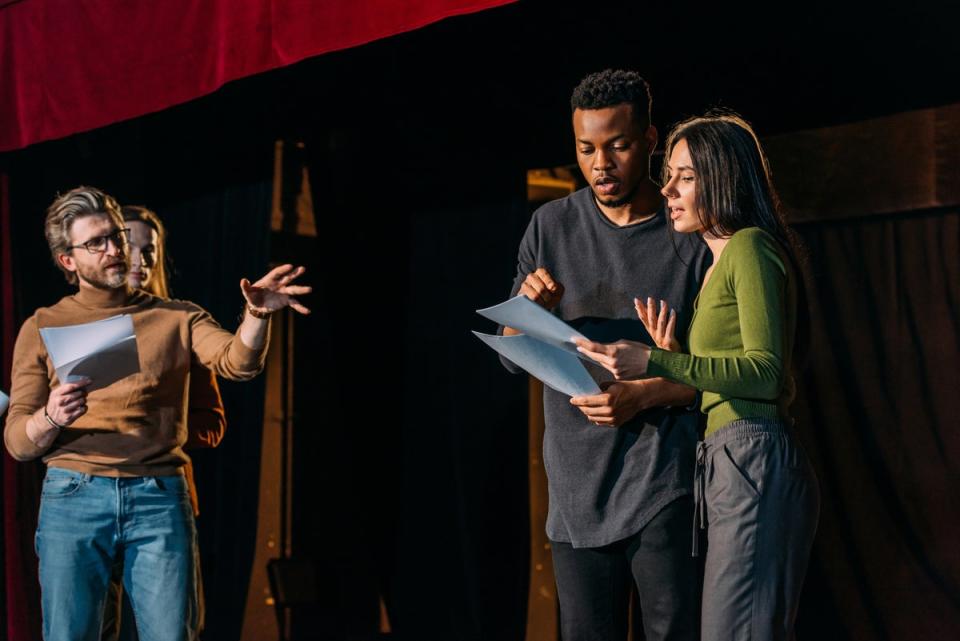Working class creatives working in film and TV have plummeted to a 10-year low
Working class representation in the film and TV industry has plummeted to the lowest level in a decade, according to a new study.
Only eight per cent of creatives in the film and TV industries identified as being from a working class background, while over 60 per cent of those working in the same sector were middle or upper class, the highest level in 10 years.
According to research conducted by the Creative Industries Policy and Evidence Centre at the University of Sheffield, the vast majority of people working in the field are from middle or upper class backgrounds. The findings will only heighten already febrile conversations about privilege within the world of the creative arts.
The report titled “Arts, Culture and Heritage: Audiences and Workforce”, uses census data to provide an in-depth analysis of the state of the arts, culture and heritage workforce across England, Wales, and Northern Ireland.
In music and the performing arts, a sector known for discovering diverse talent, 65 per cent of people are now middle class, marking a record high – only 16 per cent are from working class backgrounds.
“There is a sense sometimes that I feel like I don’t belong in certain events and certain people I’ve met who I do feel sometimes judged by,” Sam Oddie, a filmmaker told Channel 4 News.
Despite winning multiple awards, he says he still struggles to do what he loves full time.
“I feel like I’ve had to earn it and I’ve eventually gotten to the point where I do feel involved and welcome, but there wasn’t [that feeling] in the beginning.”
Actor Samira Ahmed told Channel 4, that attending drama school had been a “traumatic experience” for her and that the industry relied on “connections”.

In addition to the findings on class, there were also notable disparities around region despite the government’s levelling up agenda to redress regional social, cultural and economic imbalances and bridge the “North-South divide”. Most creatives are based in the country’s capital of London, which is also one of the most expensive places to live.
Race was another consideration: over 90 per cent of people in the creative industries are white, higher than the general workforce average of 85 per cent. Seventy per cent of those in managerial positions are men, with only 1 per cent being black.
It comes shortly after Paddy McGuinness defended his working class roots after his appearance on Question Time was criticised for “dumbing down” the programme.
“When I got asked to go on, it’s the sort of programme that is terrifying. But it would have really irked me if hadn’t done it. It wouldn’t have sat easy with me,” he said at the time.
“Being working class, people look at you as the place you are from as you still speak like them - if I hadn’t done it then you’re not getting people’s voice across.”
Bernard Hay, Head of Policy at Creative PEC said: “This research shows that the likelihood of someone participating or working in arts, culture and heritage still varies significantly depending on a range of factors. These include gender, disability, ethnicity, social class, or geographic location.
“It also shows the picture can be very different depending on the type of activity or job. Viewed together and in the context of funding challenges for UK arts, culture and heritage, as well as a cost-of-living crisis, this report shows that we still have a long way to go to address social inequalities in many parts of the sector.”
Dr Mark Taylor, lead author of the report highlighted more positive aspects of the report including increased LGBTQ+ representation.
“Our new report confirms ingrained inequality across several demographics, using census data for the first time to provide this level of insight.
“However, we also identify ways in which arts, culture and heritage could be considered more inclusive than other sectors. For example, workers are more likely to be LGBTQ+, and in terms of participation in some creative activities for example creative writing, disabled people are more likely to participate.
“Overall, though the picture is one of sustained inequality in both workforce and audience diversity across arts, culture and heritage.”

